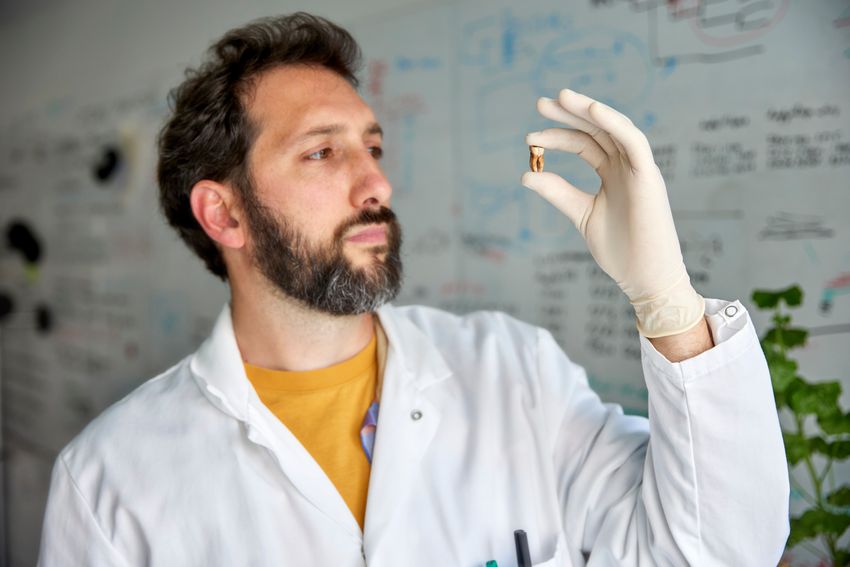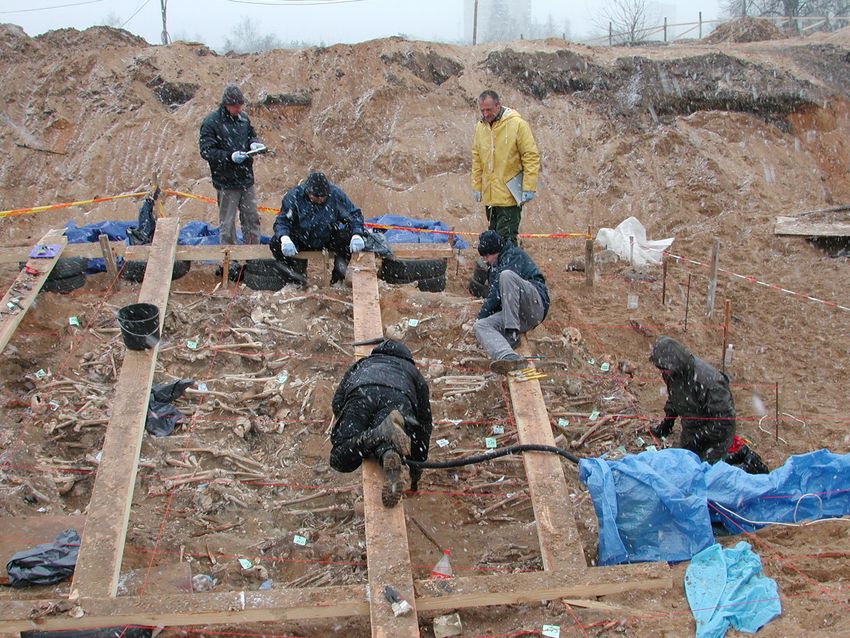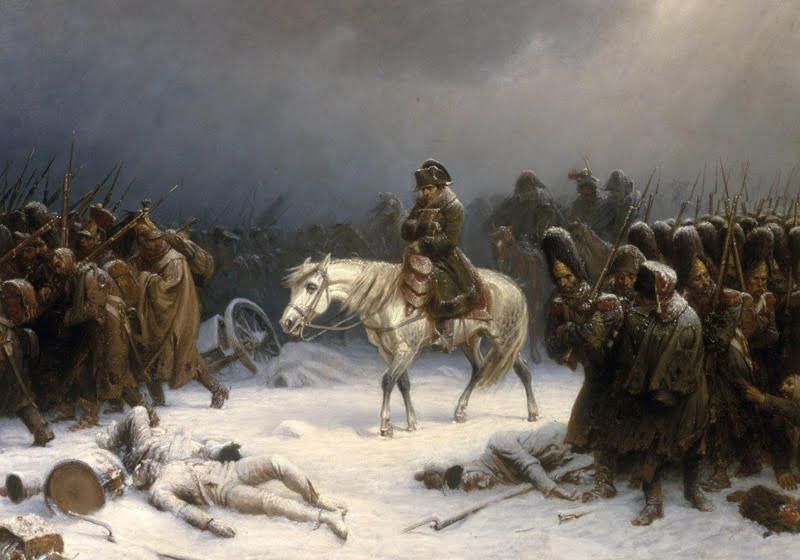DNA isolated from some soldiers in Napoleon’s troops in 1812 offered insights on some diseases that affected the soldiers. Shown here is a depiction of the retreat in a painting titled “Napoleon’s Retreat from Moscow” painted by Adolph Northen in 1851.
Image credit:Barbieri et al., Current Biology
In the summer of 1812, French emperor Napoleon Bonaparte mobilized an army of almost half a million soldiers to invade the territory controlled by the Russian Empire. By fall, when the emperor did not decisively defeat the Russian troops, he initiated a retreat, retracing his original path back to France. However, the harsh Russian winter wreaked havoc: Starvation and disease killed more than half the army, but researchers had been debating the exact pathogens responsible for the soldiers’ demise.
In 2001, experts found and excavated the remains of soldiers in Napolean’s army at the Vilnius cemetery.
M. Signoli, UMR 6578 – CNRS, Aix-Marseille University, EFS
Almost two centuries later, in 2001, construction work unearthed a mass grave of some of these soldiers in Vilnius, present-day Lithuania.1 Scientists extracted DNA from the site and, using the sequencing technology available then, identified typhus-causing bacteria.2
“But now, with the development of new techniques in [the field of] ancient DNA,…[we] thought ‘Why not retest some soldiers from this site to see whether we can get more insights into the…diseases that infected this population’,” said Nicolás Rascovan, a microbial paleogenomicist at the Pasteur Institute.
Using next-generation sequencing to analyze ancient DNA samples, Rascovan and his team found traces of bacteria responsible for paratyphoid and relapsing fevers.3 Their results, published today in Current Biology, suggest that these diseases likely contributed to the devastation of Napoleon’s army.
“The paper is really fantastic,” said Laura Weyrich, a microbiologist specializing in ancient DNA research at The Pennsylvania State University, who was not associated with the study. “Because it’s giving us viewpoints into what are otherwise historical medical records that we couldn’t understand, because we didn’t have the ability to do laboratory testing on [people] in the past.”

Nicolas Rascovan, lead author of the study and head of the Microbial Paleogenomics Unit at Institut Pasteur analyzed ancient DNA from teeth obtained from excavated remains of Napoleon’s army.
Claudio Centonze, European Commission
For nearly two centuries, historians debated the factors that culminated in Napoleon’s army’s demise. A physician in the army described that typhus—a group of infectious diseases which commonly affected army camps—plagued the soldiers in 1812.
So, when archeologists discovered the mass grave in the early 2000s, scientists went in search of typhus-related pathogens in the remains of body lice that some soldiers carried. They used nested PCR, a protocol that utilizes two primer pairs to amplify a complete DNA fragment with enhanced sensitivity. This helped them identify Rickettsia prowazekii, which is one of the bacteria that cause typhus. They also identified Bartonella quintana, which causes trench fever.2
Now, nearly two decades later, Rascovan and his team used another approach to reanalyze the ancient DNA. They extracted DNA from the teeth of 13 of the buried soldiers and subjected the samples to next-generation sequencing.
Screening their sequencing reads against known bacterial genomes helped the researchers identify two candidate pathogens in some of the individuals: Salmonella enterica and Borrelia recurrentis, which cause paratyphoid fever and relapsing fever transmitted by body lice, respectively. However, they did not find any signs of typhus-related bacteria. Additional authentication steps further validated the presence of S. enterica and B. recurrentis.

Experts excavated the remains of soldiers in Napoleon’s army at the Vilnius cemetery.
M. Signoli, UMR 6578 – CNRS, Aix-Marseille University, EFS
“[The results] were interesting, because it is two pathogens we were not expecting,” said Rascovan.
While Weyrich was surprised that the researchers did not find traces of typhus like others did earlier, she noted that the samples for the two studies originated from different individuals. “It doesn’t erase the previous evidence,” she said. “But it creates a much stronger dataset to be much surer about the results and be much more confident in potentially what was going on.”
Weyrich added that analyzing just 13 samples is too limited to draw broad conclusions about disease prevalence in the troops. Rascovan agreed but noted that detecting four pathogens—two in the 2000s and two now—in just a handful of the soldiers suggests that there were more diseases in Napoleon’s camp than previously thought. Despite this, he said that the cold, rather the diseases, likely killed a majority of the soldiers.
To get a more complete picture, scientists must analyze more samples. But since this involves destroying ancient samples, the researchers need to carefully consider their options. “Who knows what we are going to be able to do in 15 years from now,” said Rascovan. “So, I think we need to be prudent always in thinking [whether it’s] worth to destroy more material.”

